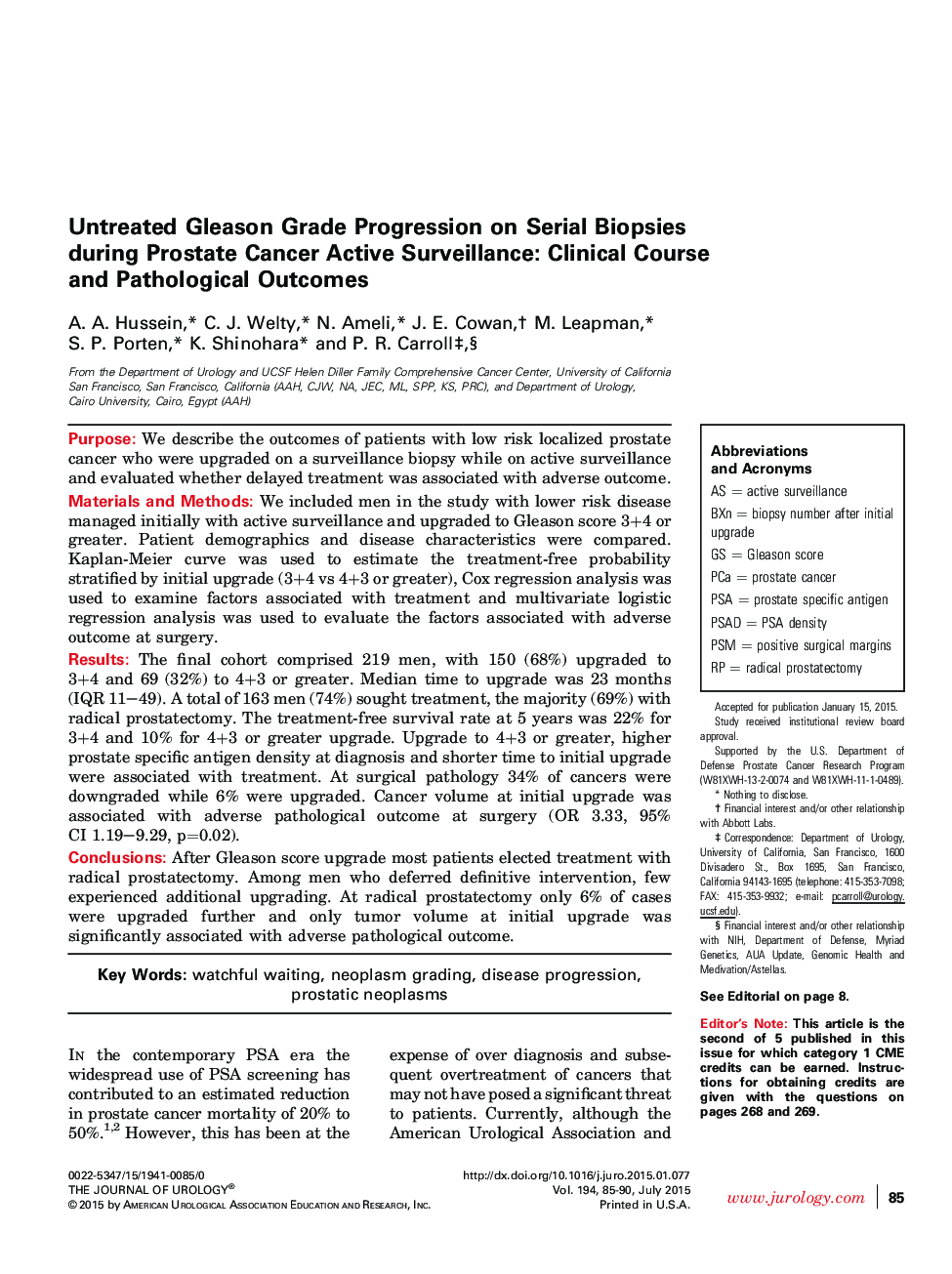| Article ID | Journal | Published Year | Pages | File Type |
|---|---|---|---|---|
| 3861675 | The Journal of Urology | 2015 | 6 Pages |
PurposeWe describe the outcomes of patients with low risk localized prostate cancer who were upgraded on a surveillance biopsy while on active surveillance and evaluated whether delayed treatment was associated with adverse outcome.Materials and MethodsWe included men in the study with lower risk disease managed initially with active surveillance and upgraded to Gleason score 3+4 or greater. Patient demographics and disease characteristics were compared. Kaplan-Meier curve was used to estimate the treatment-free probability stratified by initial upgrade (3+4 vs 4+3 or greater), Cox regression analysis was used to examine factors associated with treatment and multivariate logistic regression analysis was used to evaluate the factors associated with adverse outcome at surgery.ResultsThe final cohort comprised 219 men, with 150 (68%) upgraded to 3+4 and 69 (32%) to 4+3 or greater. Median time to upgrade was 23 months (IQR 11–49). A total of 163 men (74%) sought treatment, the majority (69%) with radical prostatectomy. The treatment-free survival rate at 5 years was 22% for 3+4 and 10% for 4+3 or greater upgrade. Upgrade to 4+3 or greater, higher prostate specific antigen density at diagnosis and shorter time to initial upgrade were associated with treatment. At surgical pathology 34% of cancers were downgraded while 6% were upgraded. Cancer volume at initial upgrade was associated with adverse pathological outcome at surgery (OR 3.33, 95% CI 1.19–9.29, p=0.02).ConclusionsAfter Gleason score upgrade most patients elected treatment with radical prostatectomy. Among men who deferred definitive intervention, few experienced additional upgrading. At radical prostatectomy only 6% of cases were upgraded further and only tumor volume at initial upgrade was significantly associated with adverse pathological outcome.
